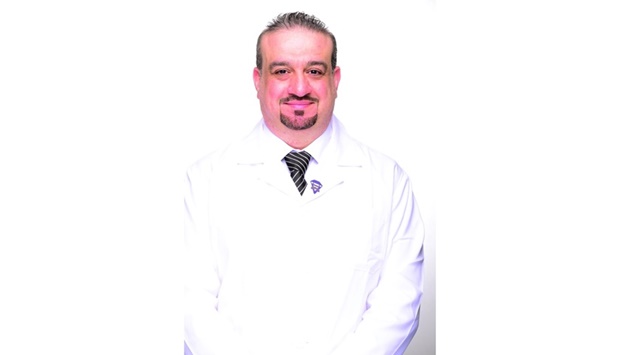Al-Ahli Hospital has announced the addition of the high-flow oxygen technique to the services it provides to patients.
This technique helps supply oxygen with a higher flow and the required concentration to the patient during the anaesthesia period, during which the amount of oxygen in the blood might decrease.
It is considered a "modern and promising" technique in the field of anaesthesia, and has several advantages, the hospital has said in a statement. The first is its ability to produce positive air pressure and significantly improve the oxygen level in the blood.
Dr Mohamed Abd al-Karim al-Hashemi, anaesthesia consultant and head of the Anaesthesia Department at the hospital, said the high flow generates a high reservoir of oxygen in the lung of the patient, decreases the re-breathing of carbon dioxide and improves the rate of ventilation. It also maintains an excellent degree of mucosal hydration and decreases the dryness of the airways, which improves patient comfort.
He added, "High-flow oxygen therapy also provides non-invasive respiratory support in addition to warm, humid, oxygen-rich air for patients with a high flow rate."
Dr al-Hashemi emphasised that the use of high flow oxygen is usually for spontaneously breathing patients who need more oxygen. Treatment with high flow oxygen also provides respiratory support for patients with acute respiratory failure due to hypoxia.
He added that high-flow oxygen can also be used to avoid endotracheal intubation and help significantly increase the oxygen content in the blood, improve the respiratory rate and relieve shortness of breath, which is reflected on patient comfort, in addition to helping in a patient's recovery after removing the tube, which leads to improved results and shortening one's stay in the intensive care unit.
He indicated that it is also useful from an economic point of view, as it reduces the need to use a respirator and can be used in various hospital departments, adding that Al-Ahli Hospital is currently the only hospital in Qatar that has introduced the use of this device for anaesthesia in the endoscopy unit of the digestive system. This has contributed significantly to reducing the risks of anaesthesia on patients, especially those who suffer from obesity and obstruction of the airways.
This technique helps supply oxygen with a higher flow and the required concentration to the patient during the anaesthesia period, during which the amount of oxygen in the blood might decrease.
It is considered a "modern and promising" technique in the field of anaesthesia, and has several advantages, the hospital has said in a statement. The first is its ability to produce positive air pressure and significantly improve the oxygen level in the blood.
Dr Mohamed Abd al-Karim al-Hashemi, anaesthesia consultant and head of the Anaesthesia Department at the hospital, said the high flow generates a high reservoir of oxygen in the lung of the patient, decreases the re-breathing of carbon dioxide and improves the rate of ventilation. It also maintains an excellent degree of mucosal hydration and decreases the dryness of the airways, which improves patient comfort.
He added, "High-flow oxygen therapy also provides non-invasive respiratory support in addition to warm, humid, oxygen-rich air for patients with a high flow rate."
Dr al-Hashemi emphasised that the use of high flow oxygen is usually for spontaneously breathing patients who need more oxygen. Treatment with high flow oxygen also provides respiratory support for patients with acute respiratory failure due to hypoxia.
He added that high-flow oxygen can also be used to avoid endotracheal intubation and help significantly increase the oxygen content in the blood, improve the respiratory rate and relieve shortness of breath, which is reflected on patient comfort, in addition to helping in a patient's recovery after removing the tube, which leads to improved results and shortening one's stay in the intensive care unit.
He indicated that it is also useful from an economic point of view, as it reduces the need to use a respirator and can be used in various hospital departments, adding that Al-Ahli Hospital is currently the only hospital in Qatar that has introduced the use of this device for anaesthesia in the endoscopy unit of the digestive system. This has contributed significantly to reducing the risks of anaesthesia on patients, especially those who suffer from obesity and obstruction of the airways.



